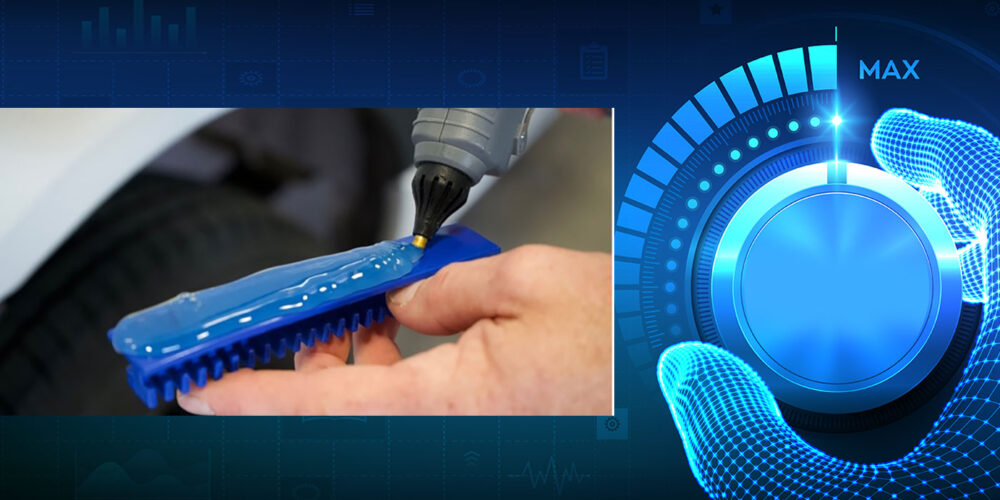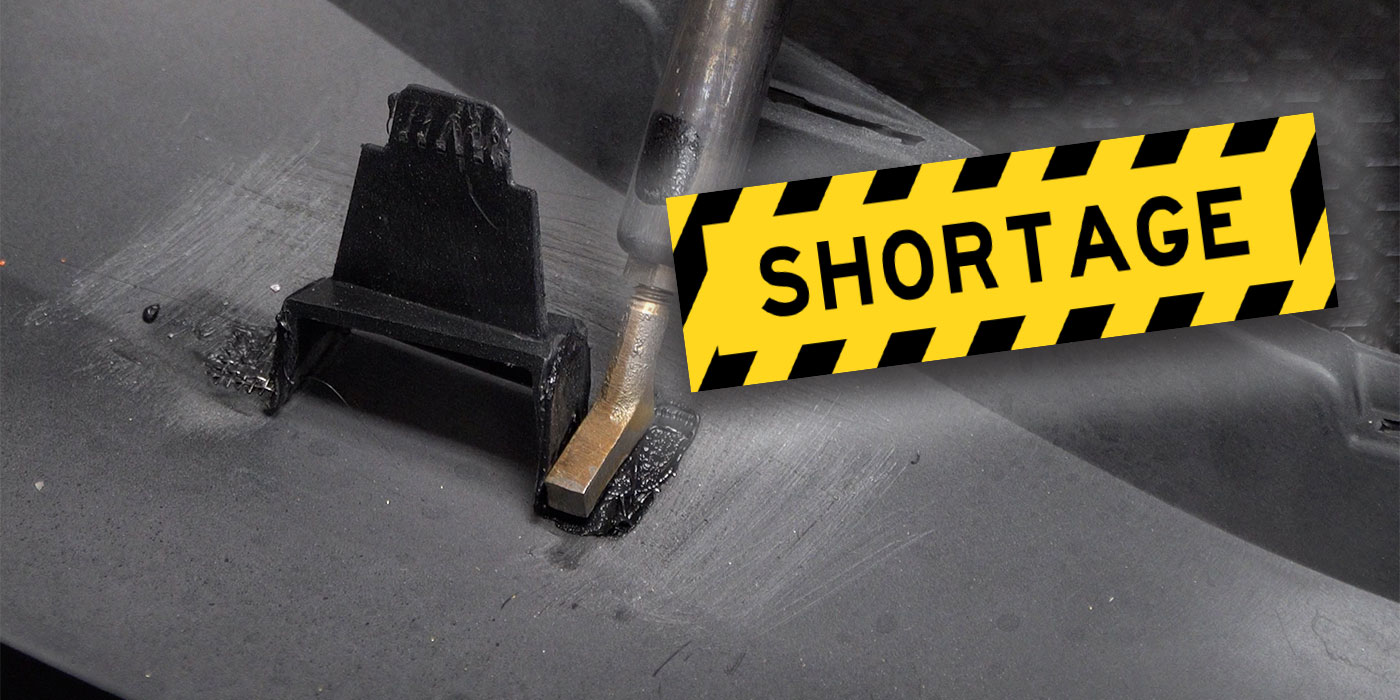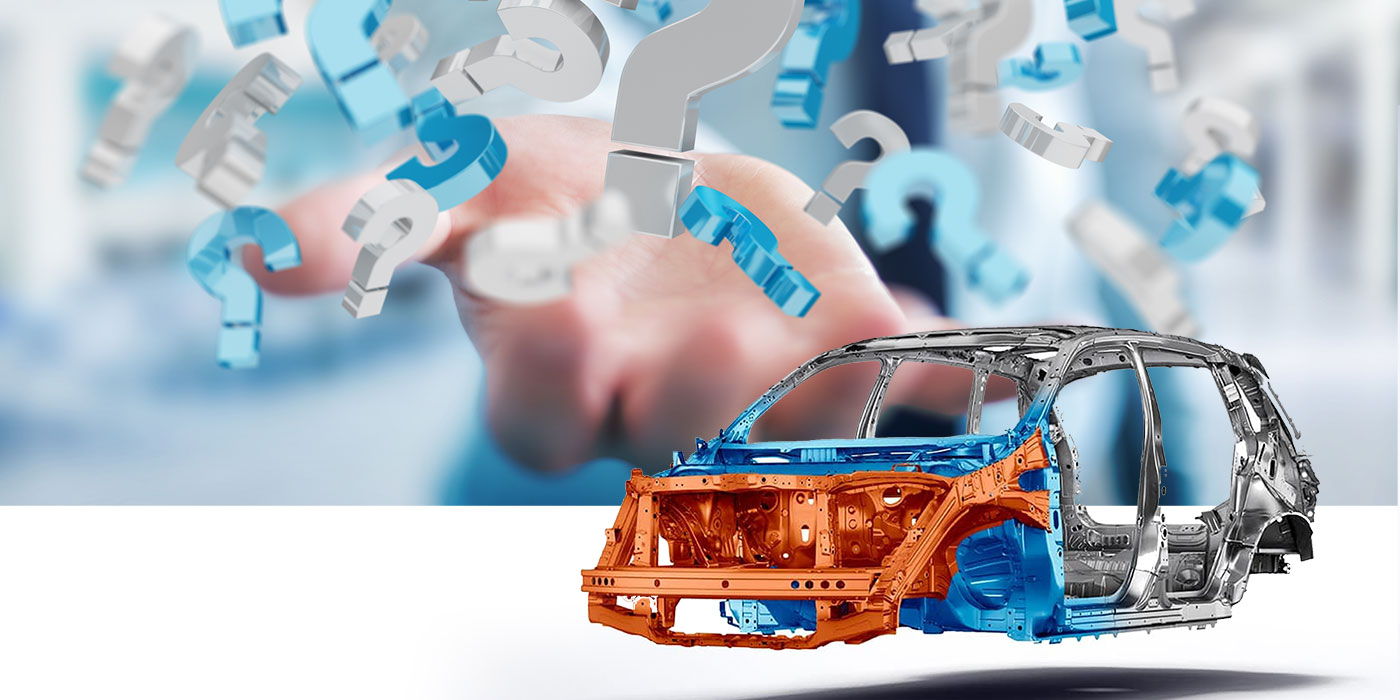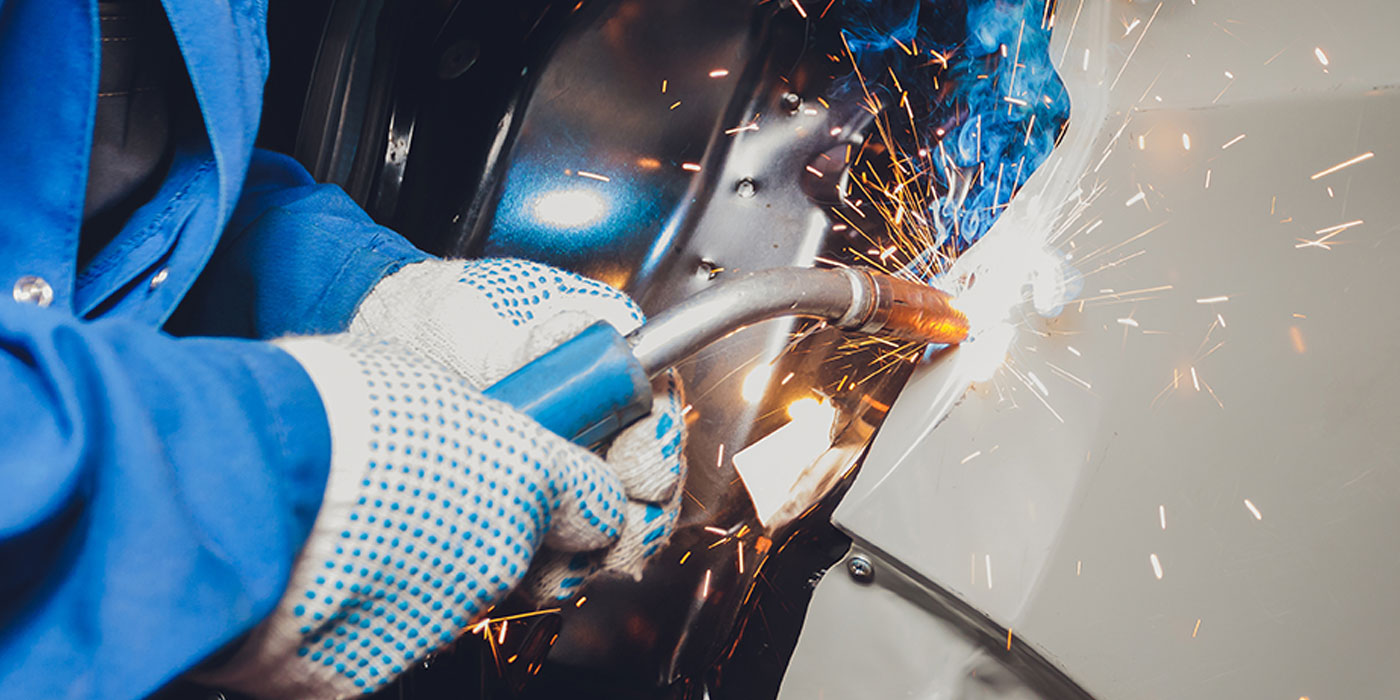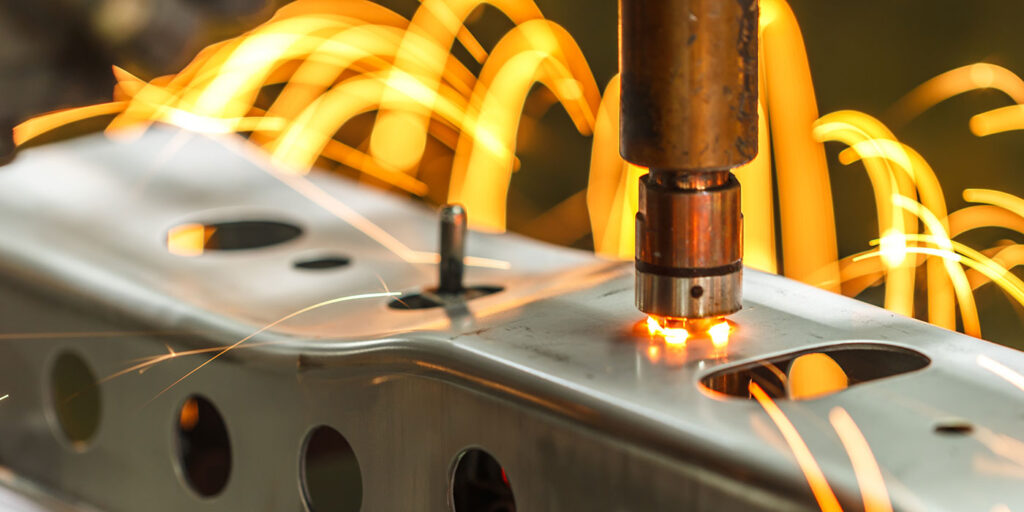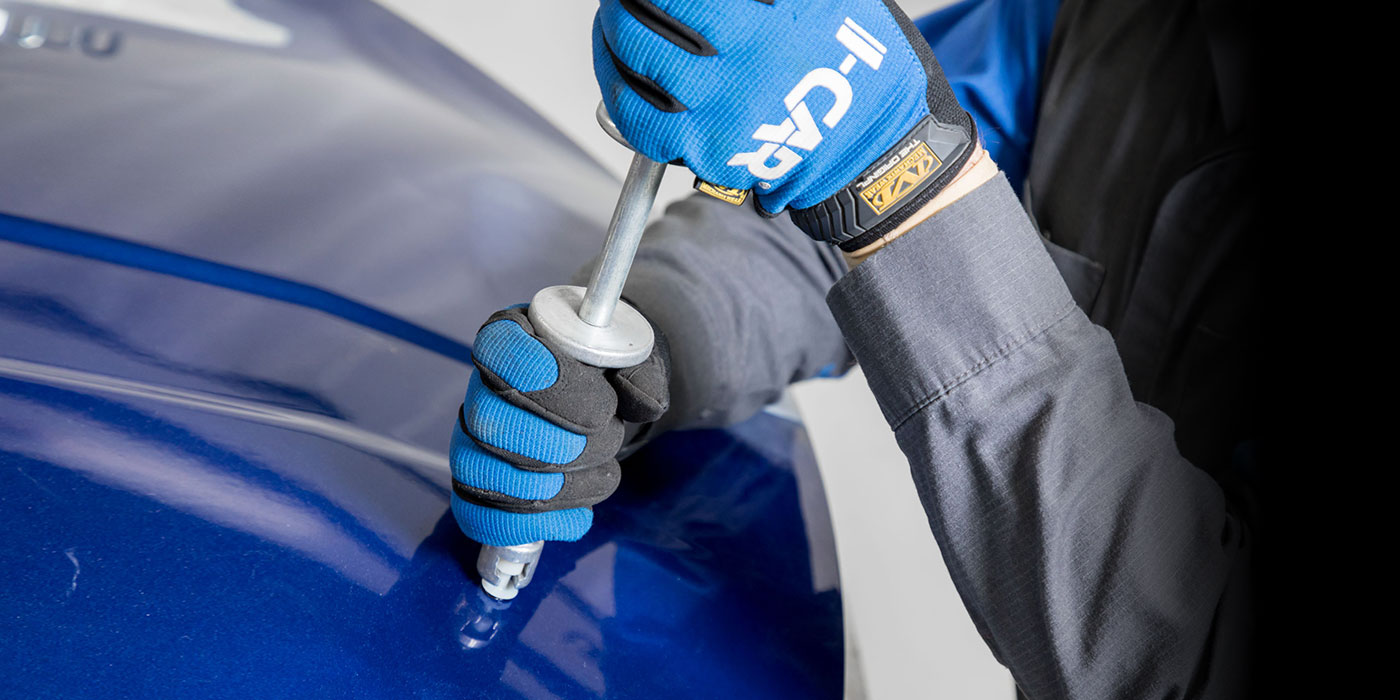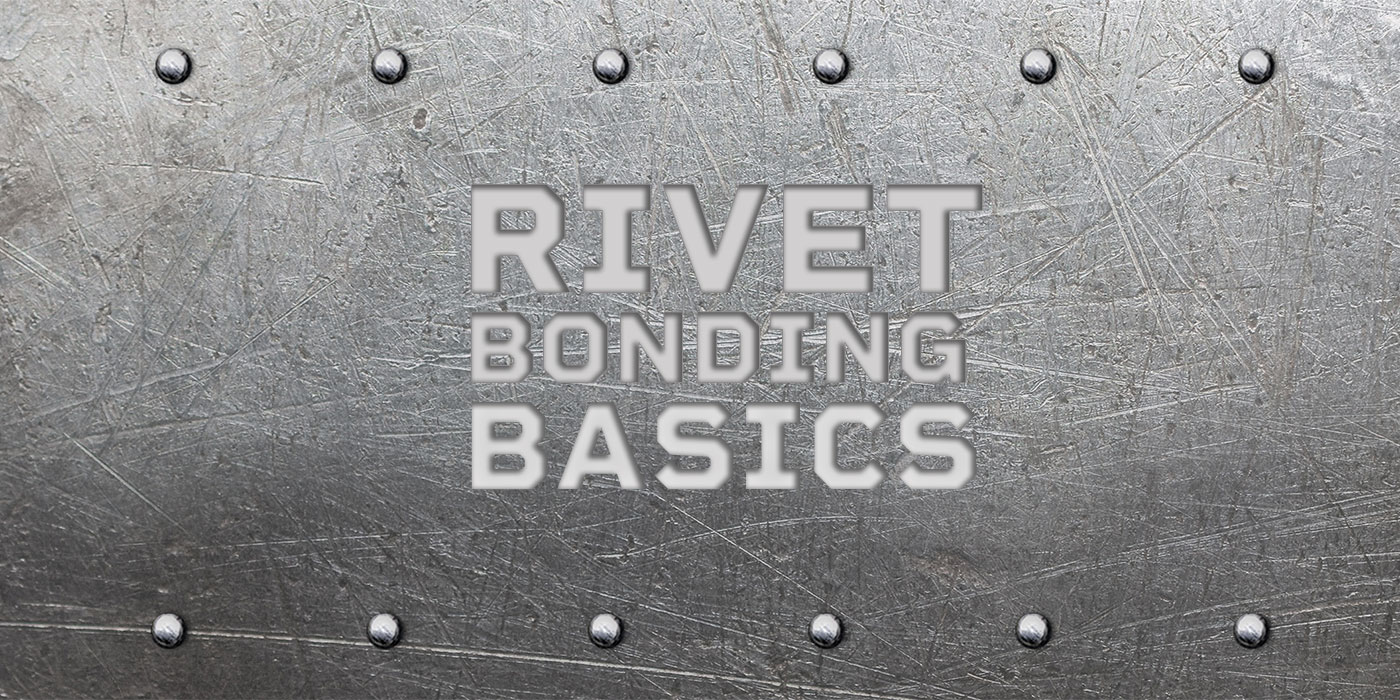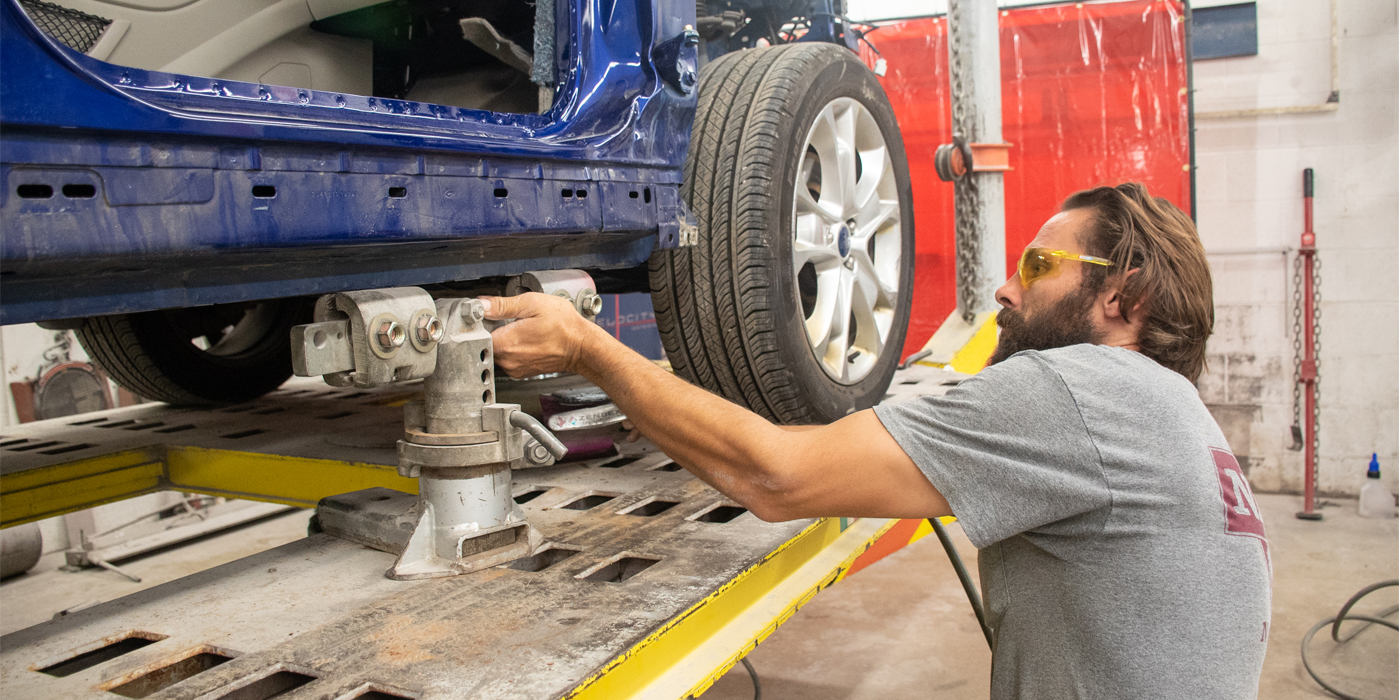The automotive industry has been undergoing a significant transformation in recent years, primarily driven by the emergence of electric vehicles (EVs) and the increasing integration of sensitive electronics into modern vehicles. Consequently, repair methods must evolve to keep pace with changing technology. One such method gaining traction for collision repair is glue pull repair (GPR).
GPR is a method of repairing damage to a vehicle’s exterior panels while significantly reducing the amount of body filler and/or paint to finish. The process involves gluing specially designed tabs to the vehicle’s exterior and using various tools to remove damage. The goal is to decrease the damaged surface area with each pull, guiding the metal to flow back into its original shape. GPR holds an advantage over other collision repair techniques because it does not remove the paint from the vehicle, and it is much less invasive. This method of damage correction also preserves the vehicle’s e-coatings and corrosion protection applied to the vehicle by the manufacturer, providing a much cleaner repair that will be more effectual and satisfactory to customers. Whether the job includes one large dent or an array of hail damage, GPR is a valuable tool for any technician in that it maximizes efficiency and reduces collateral damage to the vehicle during repair.
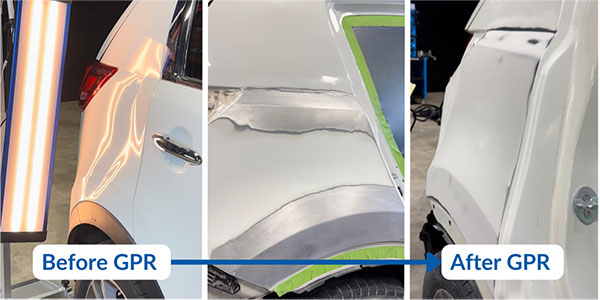
GPR is now an essential method to utilize with the technological advancements in the materials vehicles are constructed of and electronics for monitoring. This applies to EVs as well, which tend to involve both aspects. Auto manufacturers are integrating more aluminum in construction for manufacturability and reduced weight. Sensors are more prevalent than ever before with the addition of advanced driver-assistance systems (ADAS). Just as with most newer vehicles, the majority of EVs include aluminum construction for weight advantages and multiple sensors for advanced monitoring. While aluminum can create a lighter car and a better driving experience, it can also create challenges for auto body professionals. Aluminum has no “metal memory,” or desire to return to its original shape, as with steel. Due to the elemental differences, a technician using stud welding will need separate sets of equipment to work with both types of metals. GPR, however, works on both steel and aluminum, eliminating the need for costly tools that are specific to one substrate.
One of the most significant benefits of GPR is its ability to remove dents without the need for traditional bodywork methods, such as stud welding. Electrical components and sensors located behind body panels make traditional bodywork methods more difficult, time-consuming and potentially damaging to a car’s system. Additionally, invasive body repair methods require an EV to be powered down before work can begin. Powering down an EV is time-consuming and can create other challenges for technicians. With GPR, there is no need for drilling or welding, reducing the risk of damage to these sensitive — and often expensive — components. Instead, GPR allows damage to be addressed from the exterior of the panel. The GPR process decreases time, effort and liability while increasing shop efficiency.
The efficiency of GPR is important, as it can increase profit margins for body shops. By saving time during the repair process, technicians can service more customers. This promotes a steady flow of jobs coming into the shop, resulting in a healthier business. When utilizing GPR, it is also important to charge for consumables used while working on a vehicle, such as tabs and glue. Consumables used in GPR are no different than those of traditional methods and should be accounted for during estimates and final billing.
Rapidly gaining popularity among consumers and professionals alike, GPR has become an imperative tool in the automotive repair industry, necessary for staying competitive in today’s market. As people rely heavily on their vehicles for work and everyday life, minimizing downtime caused by repairs is important. GPR offers a faster, more efficient solution for quality repairs, allowing drivers to get back on the road swiftly.
Incorporating GPR into a shop’s operations is a worthwhile investment to maximize overall profitability and efficiency. This method of collision repair can be a great asset and skill set for technicians and shop owners striving to remain current with industry trends while growing their businesses. GPR is indispensable for quality repairs, particularly for those who prioritize preserving vehicle integrity while achieving meaningful results.
Moreover, the widespread adoption of GPR has led to advancements in equipment and techniques, further enhancing its effectiveness. Newer tools and training programs are always improving the precision and efficacy of GPR, further solidifying the significance of the repair method for collision shops. Additionally, as consumer demand for eco-friendly solutions grows, GPR’s ability to reduce waste by minimizing the need for fillers and paints aligns with environmental sustainability goals. This not only enhances the appeal of GPR to environmentally conscious consumers but also positions repair shops as responsible stewards of the environment.
The versatility of GPR extends beyond traditional dent repair. It can be utilized to repair small hail or crease damage into a flat finish, further expanding its utility in the automotive repair industry. Continuous improvement in tools and training empowers technicians to refine their craft, expanding their ability to tackle a broader range of issues using a single method, thereby streamlining the repair process and enhancing overall effectiveness.
Ensuring that technicians receive proper training to effectively utilize GPR is vital. Technicians must believe in the process and the product for the shop to truly succeed in the long run. GPR is an increasingly essential repair technique in body shops, and its widespread adoption is crucial to keeping pace with industry advancements.
As technology continues to advance and vehicles become more complex, the importance of innovative repair techniques like GPR will only grow. By embracing GPR, shops can stay ahead of the curve, offering customers efficient, high-quality repairs while maximizing profitability and reducing environmental impact. The integration of GPR into auto repair practices represents not only a practical necessity but also a strategic opportunity for repair shops to thrive in an evolving industry landscape.

